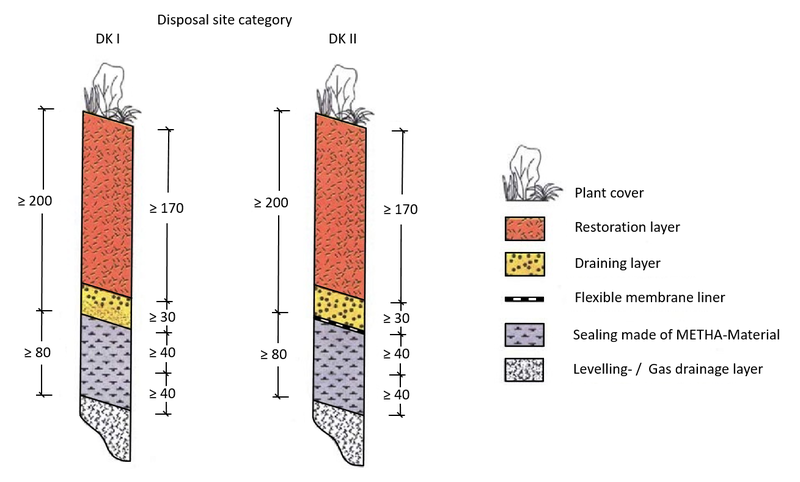Use as sealing material
Right from the start of the Hamburg dredged material disposal sites in Francop and Feldhofe, the mineral sealing layers consisted of treated, clayey-silty sediment (METHA-material produced in the METHA-Plant). To encourage further beneficial use possibilities, the Hamburg Port Authority (HPA) also applied for a suitability assessment procedure for the use of METHA-material as a secondary raw material for a surface sealing system on disposal sites at the LAGA (Working Group of the Federal States on Waste). In 2008, the evaluation procedure was successfully completed and METHA-material was classified as a certified secondary material for use in surface sealing on disposal sites nationwide.
In Germany, according to the Landfill Directive, disposal site construction materials must comply with the state of the art. LAGA set up the ad hoc working group "Landfill Technology" for suitability assessments carried out by the Länder. For the use of secondary raw materials, the working group has set the required test criteria and the requirements for proper installation as well as the issues of the quality management as a national standard.
The suitability assessment was based on many individual assessments with detailed technical and organisational specifications. In particular, the focus was on the evaluation of the soil-mechanical and waste-chemical characteristics of the METHA-material. The technical suitability and the environmental harmlessness of the utilisation was demonstrated in the assessment procedure considering established legal German standards.
The requirements for the accredited sealing system are described in more detail in the documents “Suitability assessment of METHA-material for the construction of mineral sealing” and “Quality management manual – Surface sealing system made of METHA-material” (see references below).
The following objectives were achieved by using the METHA-material as a sealing material:
- There was a consequent beneficial use of “waste” during the construction of disposal sites;
- Natural resources such as clay and loam were protected;
- The usie of a secondary raw material efficient and cost-effective.
Graphical information:

Figure 1: Schematic diagram of the accredited surface sealing system
References/web links
- DETZNER, H.-D., 1995. The Hamburg project METHA, large-scale separation, dewatering and reuse of polluted sediments. European Water Pollution Control. Vol. 5, no. 5, pp. 38-42.
- DETZNER, H.-D. and KNIES, R., 2004. Treatment and beneficial use of dredged sediments from Port of Hamburg. World Dredging Congress XVII. Hamburg, Germany. B2-1, pp. 1-14.
- LAGA Ad-hoc-AG, 2008. deponietechnische Vollzugsfragen. Eignungsbeurteilung von METHA-Material zur Herstellung von mineralischen Dichtungen (Suitability assessment of METHA-Material for the construction of mineral sealing). Available from: http://www.gewerbeaufsicht.niedersachsen.de/download/30121/Eignungsbeurteilung_von_METHA-Material_zur_Herstellung_von_mineralischen_Dichtungen.pdf
- LAGA Ad-hoc-AG, 2008. deponietechnische Vollzugsfragen. Qualitätsmanagement-Handbuch Oberflächenabdichtungen aus METHA-Material (Quality management manual – Surface sealing system made of METHA-Material). Available from: http://www.gewerbeaufsicht.niedersachsen.de/download/30145/Qualitaetsmanagement-Handbuch_Oberflaechenabdichtungen_aus_METHA-Material.pdf